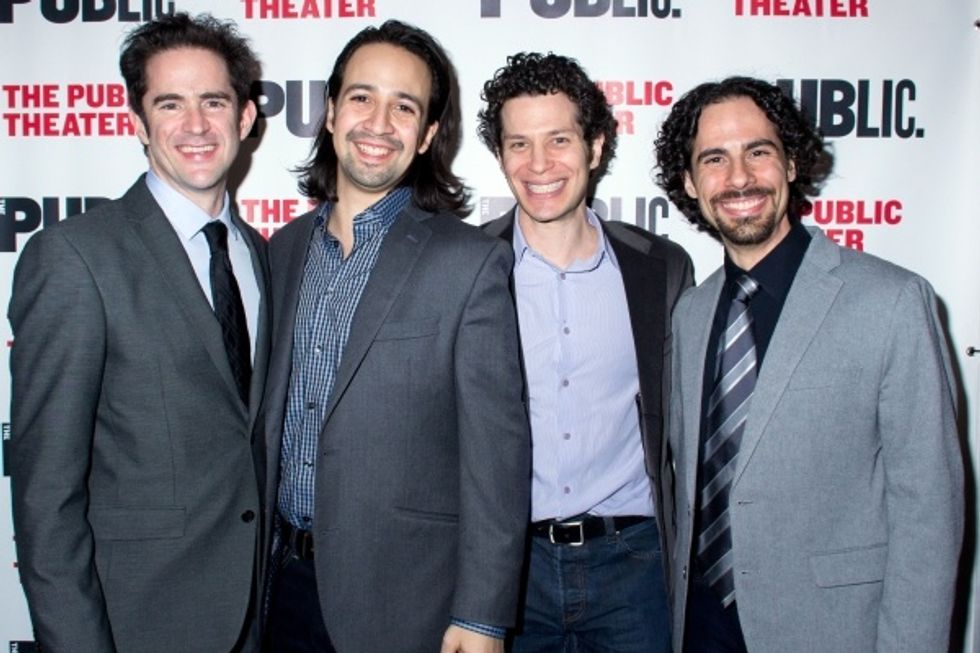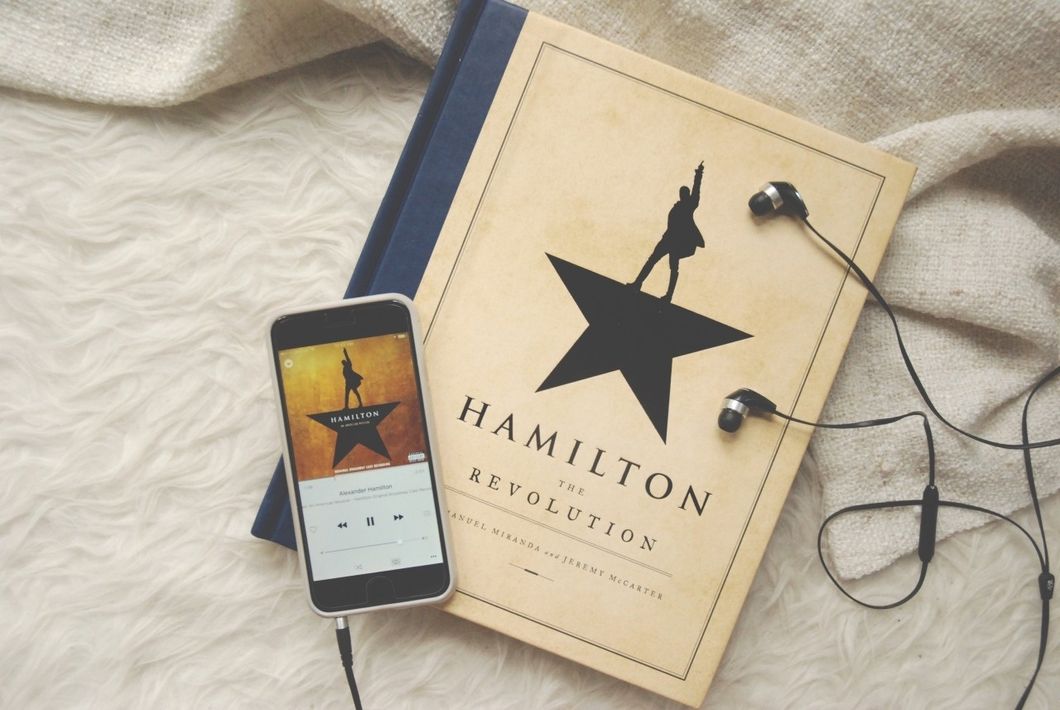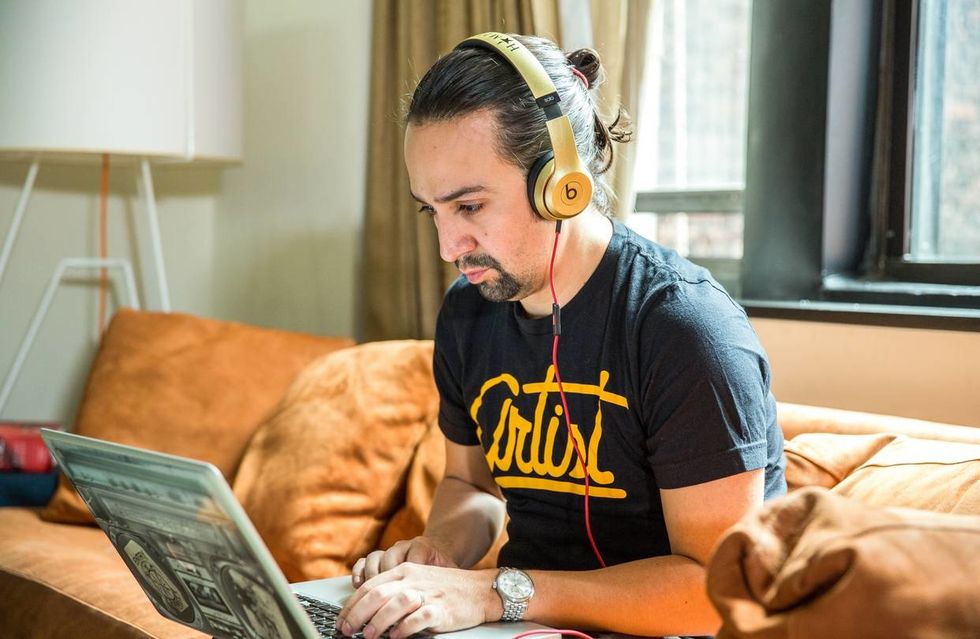Over the Thanksgiving break, I spent a good chunk of time reading "Hamilton: The Revolution" by Lin-Manuel Miranda and Jeremy McCarter. I've been a fan of the show for years, so it was about time that I finally picked it up. And while my focus was on the annotated libretto (or script) for the purpose of a school project, I took advantage of the free time I had to read through a number of the chapters interspersed between the scenes. And despite the fact that I haven't finished them all yet, I found it so inspiring.
Overall, the book's basic purpose is to detail the development of this musical from the beginning to its peak as of the time of publishing. (Clearly, it's got "The Revolution" in the title for a reason.) It talks about the people (plus a dog) who inspired Miranda along the way, credits the whole team that helped each aspect of the show come into fruition, explains the lead cast members' path to and through "Hamilton", and gives notes written by Miranda himself on certain pieces of the music/script that give a deeper understanding of the show. In addition, it comments on the position of this show in the social world at the time (which happened to be just before this new post-2016-election era).
Why is this important? Everyone knows by now the genius of this musical, whether they like it or not. It didn't win all those Tonys, a Grammy, or the Pulitzer Prize for nothing. Part of this importance is because learning about important pieces of art is central to cultural awareness. But in the creative world, it becomes even more valuable.
Something I've heard time and time again through my years of working on different art forms and being around countless others doing the same is to constantly expose yourself to others' art- especially in your own field. Writers have to read. Musicians have to listen. Artists have to look around. Actors, theater designers, and dancers have to watch. The list goes on- but "Hamilton" incorporates all of that and the way this book outlines all of it is remarkable.
The annotations in the libretto don't just deepen your understanding of the show- they give you background and share anecdotes that show you how he came up with the little nuances that make it what it is. I mentioned that each core member of the team- the director, the choreographer, the set designer, the costume designer, the orchestrator, the producer, the lighting designer, and more- get credited, but it's more than that. They all have whole chapters dedicated to explaining what went into their work. I definitely did not realize all the little details that went into things like the costume design of this show and such before reading this. Each of the lead actors has chapters about them, too- the stories of Hamilton team finding them and deciding to cast them, their approaches to their roles, and more. The book really shows all sides of how this Broadway hit came to be.

Then there are the chapters on how Miranda found his inspiration, which expand upon how he wrote the show with such precision. How he took bits and pieces from landmark pieces of music, from musical theatre to hip-hop to operetta, to create new ones. How he spoke about every historical detail with the author of the biography of Alexander Hamilton that inspired the show in the first place because, to quote him, "I want historians to take this seriously." How he read many of Hamilton's old writings as well as his correspondence with other characters mentioned in the musical. How he spoke with seasoned Broadway composers about their works. And though there's a quote in one of his annotations that says much of the writing process is "pooping around on Twitter until [he gets] an idea," it's clear from the contents of this book that there's so much more to the process than that.
All of this together really shows every detail of what it takes to put together such an incredible and complex piece of storytelling. And that's all that art is- storytelling in one way or another. Exposing yourself to how professionals in not just your field but in other forms of art tell their stories can give you a new perspective on how you tell your own. Hamilton isn't a bad place to start.

















